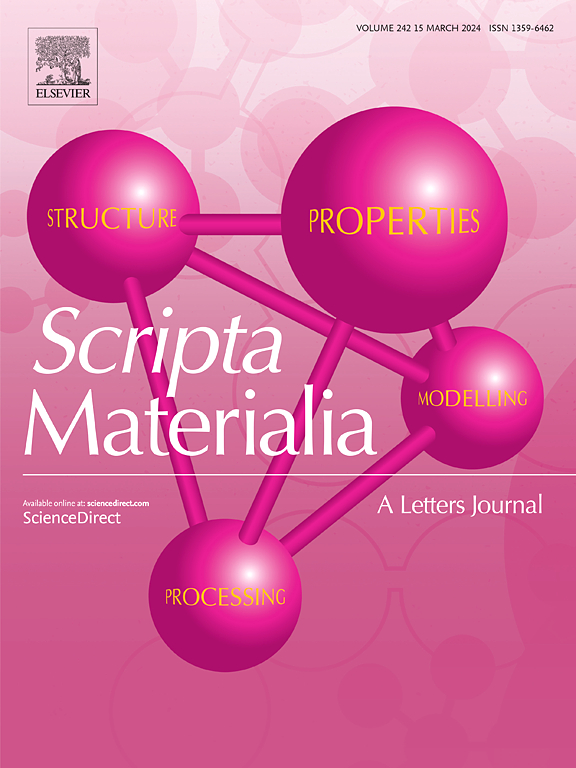马氏体Ti50Ni50合金非晶化及其对纳米力学性能的影响
IF 5.3
2区 材料科学
Q2 MATERIALS SCIENCE, MULTIDISCIPLINARY
引用次数: 0
摘要
变形诱导非晶化(DIA)对TiNi形状记忆合金的力学性能和功能性能起着至关重要的作用。然而,局部剪切变形下非晶化的形成条件尚不清楚。本文采用高通量纳米压痕技术研究了马氏体TiNi合金DIA的临界条件及其对纳米力学性能的影响。当压痕深度达到400 nm(等效应变为1.644)时,压痕下形成明显的非晶态形核。高压扭转(HPT)实验进一步揭示了非晶体积分数随剪切应变的增加而增加。由此产生的DIA-TiNi合金的硬度比其铸态晶体的硬度提高了90%,并且表现出显著降低的应变率灵敏度。协同剪切模型分析显示,其剪切转变区体积(STZ)为25.82 nm³,显著超过熔融淬火金属玻璃。该跨尺度研究确定了临界应变阈值和应变-非晶化关系,指导了非晶纳米TiNi合金的设计,提高了合金的稳定性和性能。本文章由计算机程序翻译,如有差异,请以英文原文为准。

Amorphization and its impact on nano-mechanical properties in martensitic Ti50Ni50 alloy
Deformation-induced amorphization (DIA) plays a crucial role in tailoring the mechanical and functional properties of TiNi shape memory alloys. However, the formation condition of amorphization under local shear deformation remain unclear. Here, we employ high-throughput nanoindentation to investigate the critical condition of DIA in a martensitic TiNi alloy and its impact on nanoscale mechanical properties. As indentation depth reaches 400 nm (equivalent strain 1.644), a distinct amorphous phase nucleates beneath the indenter. High-pressure torsion (HPT) experiments further reveal increased amorphous volume fraction with shear strain. The resulting DIA-TiNi alloy achieves a 90 % hardness gain over its as-cast crystalline counterpart and exhibits dramatically lower strain-rate sensitivity. Cooperative shear model analysis discloses an exceptional shear transformation zone volume (STZ) of 25.82 nm³, significantly surpassing that of melt-quenched metallic glasses. This cross-scale investigation defines the critical strain threshold and strain–amorphization relationship, guiding the design of amorphous–nanocrystalline TiNi alloys with enhanced stability and performance.
求助全文
通过发布文献求助,成功后即可免费获取论文全文。
去求助
来源期刊

Scripta Materialia
工程技术-材料科学:综合
CiteScore
11.40
自引率
5.00%
发文量
581
审稿时长
34 days
期刊介绍:
Scripta Materialia is a LETTERS journal of Acta Materialia, providing a forum for the rapid publication of short communications on the relationship between the structure and the properties of inorganic materials. The emphasis is on originality rather than incremental research. Short reports on the development of materials with novel or substantially improved properties are also welcomed. Emphasis is on either the functional or mechanical behavior of metals, ceramics and semiconductors at all length scales.
 求助内容:
求助内容: 应助结果提醒方式:
应助结果提醒方式:


